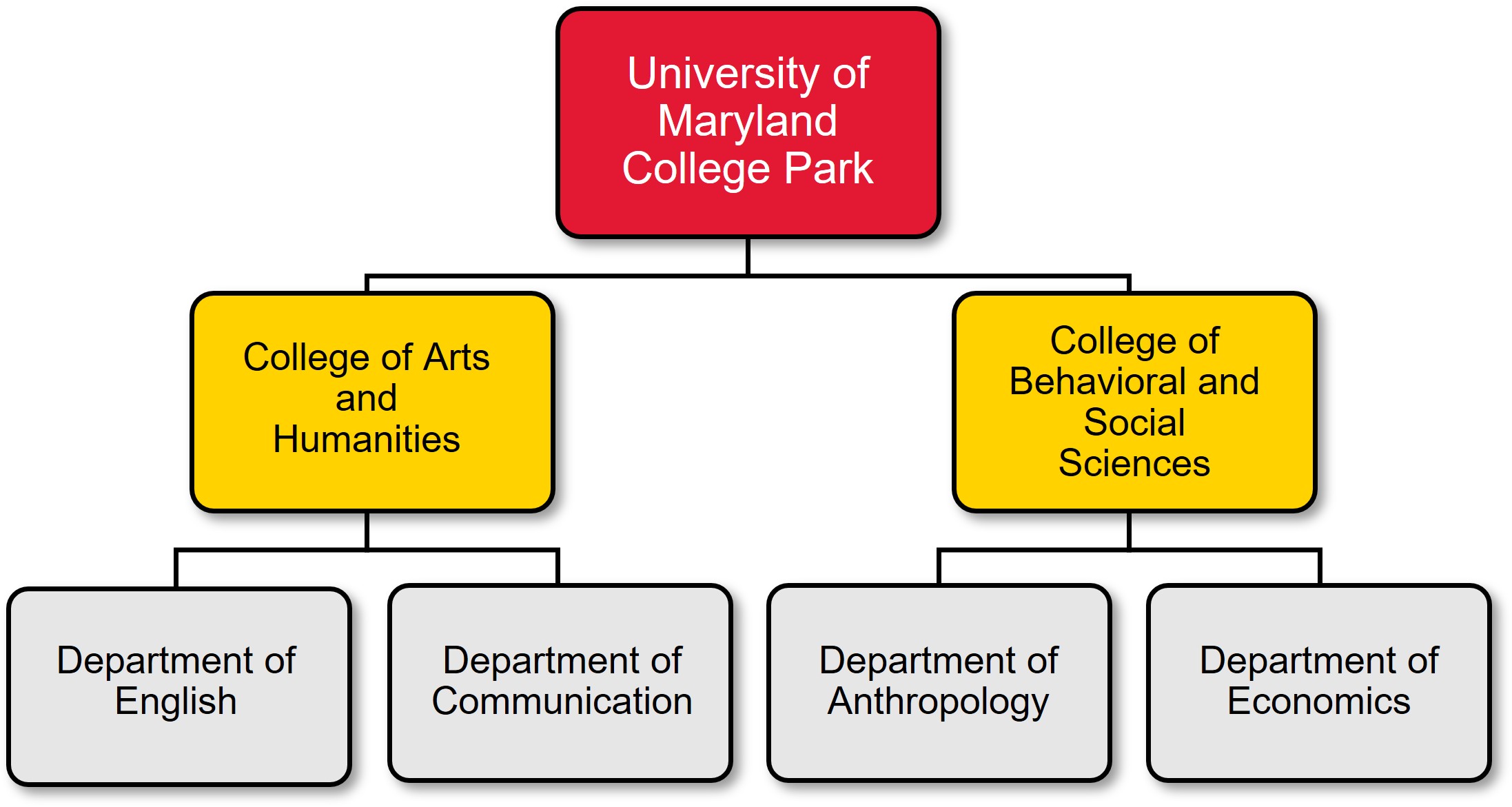Academic Unit
An Academic Unit is the primary organizational structure in Workday Student and is used to represent entities such as schools, divisions, departments, and any other entity that admits students, offers Programs of Study, or offers courses.

An Academic Unit is a specific type of organization that can have a relationship to superior Academic Unit(s) to form an Academic Unit structure (e.g., organizational hierarchy). Policies such as the academic calendar, enrollment access, grading policies, academic standing, and student payment type are inherited from the superior Academic Unit, unless a policy is articulated for a lower level. For example, at the University of Maryland, College Park would be the superior unit to each of the schools and colleges on the UMD campus, and some schools may have their own policies, so they will not inherit those policies from the Academic Unit University of Maryland, College Park.
Academic Levels, such as Graduate and Undergraduate, determine which levels are offered under an Academic Unit. Once Academic Levels are configured, Workday can tie capabilities such as Admit Student, Offer Course, and Offer Program of Study to levels under Academic Units. For example, UMD might admit students at the Undergraduate Level under the Academic Unit University of Maryland, College Park. UMD might offer courses at the Undergraduate Level under the academic unit Department of Economics. In this example, admission of students would trickle down to the Department of Economics for undergraduate students, because the Admit Student feature is not turned on for that Academic Unit. In this example, there is no set up for the Graduate Level. The set up can look different for multiple levels within a single unit.
Academic Units offer opportunities for:
- Greater consistency of policies and processes across campus through its inheritance capabilities.
- Flexibility for departments and other academic units that may require policies and processes outside of the norm.
Example:
An example of an Academic Unit structure is outlined below. Please keep in mind that this is an example of the concept and not a decision of how UMD will use this functionality.
The Department of English and the Department of Communication inherit Roles, Policies, and Business Process Definitions from the College of Arts & Humanities and the University of Maryland, College Park. The Department of Anthropology and the Department of Economics inherit Roles, Policies, and Business Process Definitions from the College of Behavioral and Social Sciences and the University of Maryland, College Park. The Department of English and Department of Communication will not inherit anything configured specifically for the College of Behavioral and Social Sciences.
How does it work if a Business Process Definition configured at a lower level (e.g., Department) is different from the Business Process configured at a higher level (e.g., School or College)?
If a Business Process Definition is articulated for a lower level of the Academic Unit Hierarchy, then this definition will override any inherited definitions from the higher level (e.g., superior) Academic Unit.
Is an Academic Unit multi-dimensional? Can certain functionality be turned on for one academic level but not another?
Yes, for example, undergraduate students may follow a business process configured for the UMCP Academic Unit, which is above the college Academic Unit, to confirm home address and emergency contacts at the beginning of the semester (known as Continuing Student Onboarding in Workday), while graduate students might follow Continuing Student Onboarding configured for the college Academic Unit.
This website will grow over time with workstream information, ideas, and topics, so please continue to revisit! To ask a question or request assistance, please contact elevate@umd.edu.
